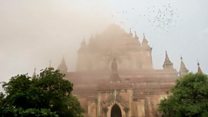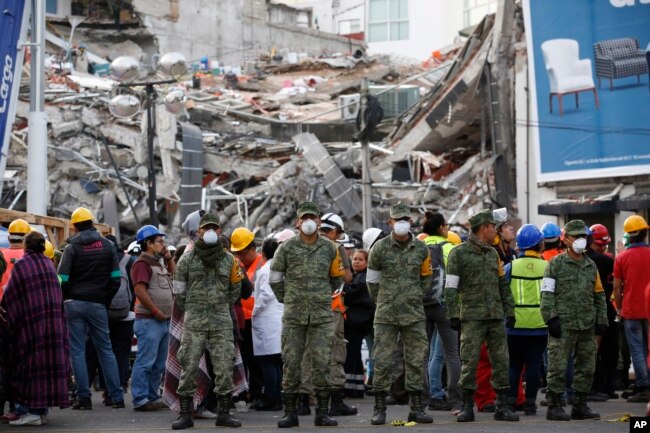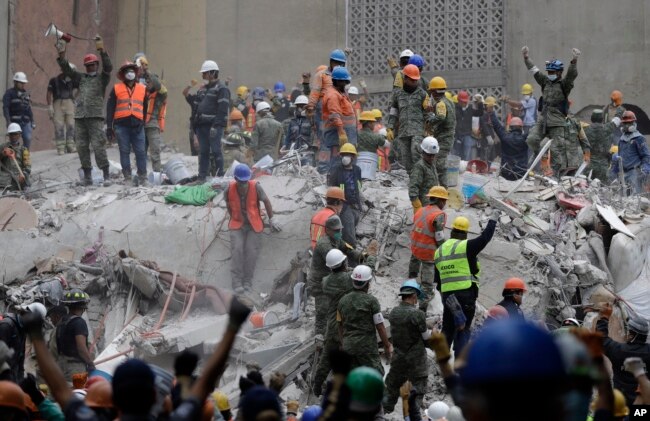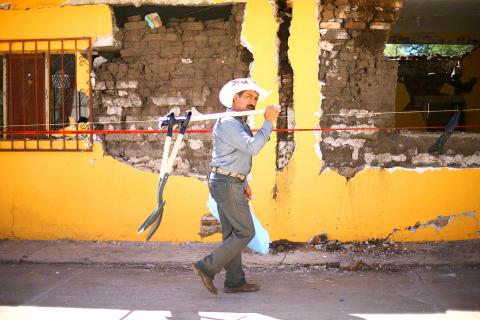The stupas, temples and monasteries became the defining emblems of Bagan, the capital of the Pagan (pronounced PUH'-gahn) empire that ruled Myanmar from roughly 1044 to 1287. On Wednesday, scores of the monuments — of which only about 2,200 remain — were damaged in a powerful 6.8 magnitude earthquake. Yet much of what fell was modern material, sanctioned by Myanmar's former army rulers who had put top priority on restoring the temples with little regard for the original architectural styles. King Anawratha, who unified the country formerly known as Burma, and his successors built the temples in a frenzy, believing they would gain spiritual merit. Still, piety didn't stop them from making war or killing to gain power. One king, Narathu, slew his father, elder brother, and one of his wives. He also killed the architect of the magnificent Dhammayangi temple so he couldn't repeat the feat, and chopped off the hands of sloppy workmen.

This photo provided by Soe Thura Lwin shows a damaged temple in Bagan, Myanmar, on Wednesday, Aug. 24, 2016. A powerful earthquake measuring a magnitude 6.8 shook central Myanmar on Wednesday, damaging scores of ancient Buddhist pagodas in Bagan, a major tourist attraction, officials said.
As more and more monuments rose in the dusty plains of central Myanmar, Bagan became the political, economic and cultural center of the empire, promoting religious as well as secular studies, including philosophy, astrology, medicine, law and Pali, the language of Buddhist scriptures. The city became an educational destination for monks from as far away as India, Sri Lanka and Cambodia. But Bagan declined as rapidly as it rose. It was abandoned around 1287 for reasons not entirely clear, and the city — once home to up to 200,000 people — was reduced to the status of a small town. Some historical accounts cite Mongol invasions but others dispute that, saying the Mongol armies may not have reached the city. But the dead city left a legacy that future generations are benefiting from. Bagan covers more than 80 square kilometers (32 square miles) of a flat plain. It is the country's biggest tourist attraction, and along with Cambodia's Angkor Wat and Indonesia's Borobudur temple, the temples of Bagan are considered one of Southeast Asia's major historical landmarks.

Yet unlike those Southeast Asian archaeological cousins, Bagan is not listed as a World Heritage Site by UNESCO due to a tangled modern tale of neglect followed by a fervid if misguided effort at renovation in the 1990s, partly to restore damage from a 1975 earthquake. As the ground shook on Wednesday, the tremors dislodged spires, loosened bricks and cracked the mortar, revealing modern material that was the result of haphazard restoration by the former military regime. These efforts drew widespread international condemnation and forced UNESCO to deny Bagan the World Heritage Site stamp, even though it acknowledged that "these monuments represent the outstanding artistic and technical achievement of an original and innovative Buddhist school of art." Much of the blame lies with the junta that took power in 1988, after crushing a pro-democracy movement. By 1995, restoration was in full swing to complete the work before the Visit Myanmar Year in 1996, which the generals of this once-pariah nation hoped would bring in much-needed tourist income.

A woman plows a field in front of the Sulamani Temple which was damaged during Wednesday's strong earthquake in Bagan, Myanmar, Thursday, August 25, 2016. The powerful 6.8 magnitude earthquake shook Myanmar, killing at least four people and damaging 185 ancient Buddhist pagodas in the former capital of Bagan, a major tourist site.
The plan was a limited success, due to still underdeveloped infrastructure and a boycott call by human rights groups against the military regime, which had placed pro-democracy leader Aung San Suu Kyi under house arrest. The country emerged from military rule this year after Suu Kyi's party won to become the country's de facto leader. Pierre Pichard, a UNESCO consultant who had long been associated with Bagan, said impressing visiting generals rather than cultural priorities dictated restoration while military-ordered excavation has been done "hastily, without proper preparation and without the requested scientific methodology and records." UNESCO was even more disturbed when a 60-meter (198-feet) -high viewing tower opened in 2005, saying it's out of scale and detracts visually from the historical monuments. State tourism authorities responded that the tower would prevent tourists from climbing on fragile pagodas and stupas and damaging them.
https://www.yahoo.com/news/quake-dam...89.html?ref=gs








 Reply With Quote
Reply With Quote







